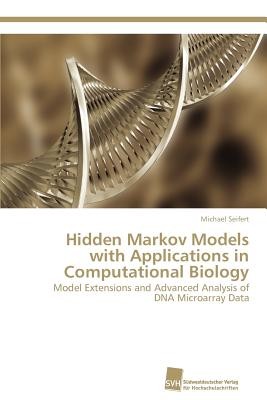
- We will send in 10–14 business days.
- Author: Michael Seifert
- Publisher: Sudwestdeutscher Verlag Fur Hochschulschriften AG
- Year: 2013
- Pages: 184
- ISBN-10: 3838136047
- ISBN-13: 9783838136042
- Format: 15.2 x 22.9 x 1.1 cm, minkšti viršeliai
- Language: English
- SAVE -10% with code: EXTRA
Hidden Markov Models with Applications in Computational Biology (e-book) (used book) | bookbook.eu
Reviews
Description
Standard first-order Hidden Markov Models (HMMs) are very popular tools for the analysis of sequential data in applied sciences. HMMs are versatile and structurally simple models enabling probabilistic modeling based on a sound theoretical grounding. In contrast to the broad usage of first-order HMMs, applications of higher-order HMMs are very rare, but they have been proven to be powerful extensions of first-order HMMs including applications in speech recognition, image segmentation or computational biology. This book provides the first easily accessible and comprehensive extension of the algorithmic basics of first-order HMMs to higher-order HMMs coupled with practical applications in computational biology. The book starts with a theoretical part developing the algorithmic basics of higher-order HMMs and two novel model extensions (i) parsimonious higher-order HMMs and (ii) HMMs with scaled transition matrices. The second part considers applications of these models to the analysis of different DNA microarray data sets followed by a detailed discussion. The book addresses readers having basic knowledge on first-order HMMs interested to gain more insights on higher-order HMMs.
EXTRA 10 % discount with code: EXTRA
The promotion ends in 21d.20:57:39
The discount code is valid when purchasing from 10 €. Discounts do not stack.
- Author: Michael Seifert
- Publisher: Sudwestdeutscher Verlag Fur Hochschulschriften AG
- Year: 2013
- Pages: 184
- ISBN-10: 3838136047
- ISBN-13: 9783838136042
- Format: 15.2 x 22.9 x 1.1 cm, minkšti viršeliai
- Language: English English
Standard first-order Hidden Markov Models (HMMs) are very popular tools for the analysis of sequential data in applied sciences. HMMs are versatile and structurally simple models enabling probabilistic modeling based on a sound theoretical grounding. In contrast to the broad usage of first-order HMMs, applications of higher-order HMMs are very rare, but they have been proven to be powerful extensions of first-order HMMs including applications in speech recognition, image segmentation or computational biology. This book provides the first easily accessible and comprehensive extension of the algorithmic basics of first-order HMMs to higher-order HMMs coupled with practical applications in computational biology. The book starts with a theoretical part developing the algorithmic basics of higher-order HMMs and two novel model extensions (i) parsimonious higher-order HMMs and (ii) HMMs with scaled transition matrices. The second part considers applications of these models to the analysis of different DNA microarray data sets followed by a detailed discussion. The book addresses readers having basic knowledge on first-order HMMs interested to gain more insights on higher-order HMMs.


Reviews